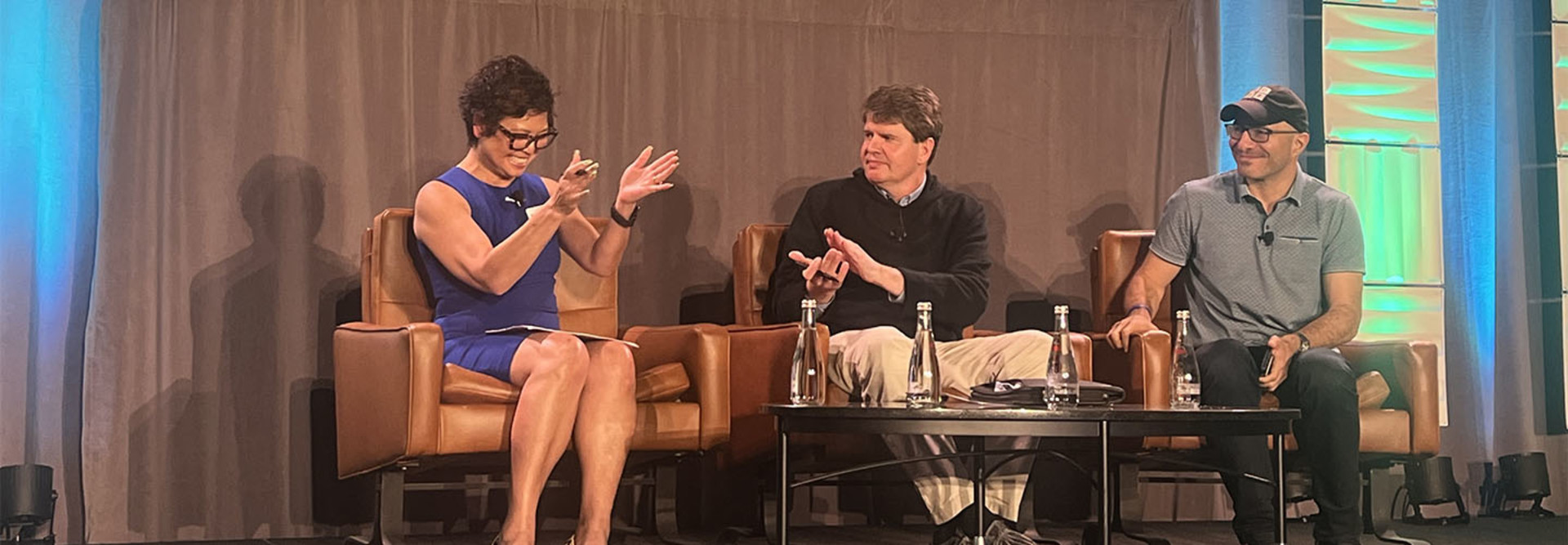“Why are we still teaching students the same thing we taught them 100 years ago?” Partovi asked.
He said that AI should become an integral and innovative part of teaching and learning in K–12. He maintained that if schools don’t act now, AI in schools could suffer the same fate as computer science. Although there has been a bigger push to teach computer science in K–12 in recent years, only a small percentage of students take these elective classes.
Partovi said that taking courses in AI shouldn’t be optional, as not including it in the K–12 curriculum could lead to a further digital divide, as explored in the 2024 update to the National Educational Technology Plan. He said that AI should be a basic part of the curriculum, much like reading, writing, math and science.
DISCOVER: Three ways that educators can use artificial intelligence.
Who Benefits Most From AI?
While Trucano said that he sees the value of using AI to support personalized learning and help lighten the load on teachers, he proposed careful consideration to best integrate it in education.
“The great promise of educational technology that we’ve had for 40 years is about the ability to tailor learning for the specific needs of our learners and better diagnose where they are,” he said. “I think that is a good place to look into AI.”
LEARN MORE: Artificial intelligence can defeat teacher burnout and boost productivity.
Still, Trucano and Partovi shared similar concerns about equity and who would benefit most from AI.
“My worry is that the poor kids will have the tech and the rich kids will have the technique,” Trucano said. He noted that students in less-advantaged communities often struggle to gain access to the internet, much less broadband.
According to Partovi, making AI a foundational part of the K–12 curriculum could help fix such issues. As an immigrant whose family fled Iran as refugees, he said he knew firsthand how learning computer science as a child can impact opportunities later in life.
AI, he said, could help unlock student potential and empower young people to be “creators and participants themselves in the rapid evolution of the human race.”
READ MORE: Could poor relationship skills derail school technology efforts?
Monitor the Tools and Be Open-Minded
Another topic the speakers addressed was AI policy, regulation and appropriate public investment in AI infrastructure for education. Partovi said that he worried that lawmakers lacked understanding of the technology and could end up restraining innovation.
Trucano again presented a more measured approach, but essentially agreed with Partovi’s assessment.
“We want to get it right,” Trucano said. “The first rule is to do no harm. On one hand, we don’t want to be extractive and exploitative, and on the other hand, we want to make sure these large language models are as relevant as possible to the widest number of experiences and kids in education. And the only way to do that is to engage in these challenges and to monitor the tools and to be open-minded.”
Partovi’s position remained clear. “The greatest risk is not doing anything,” he said. “There is some value to waiting and seeing so we can get it right, but doing absolutely nothing at all is going to be the worst disservice for our young people. Basically, a generation that doesn’t learn about how to use this technology and how to create with this technology is going to be left behind, and it’s really up to us as educators to evolve.”
Join EdTech as we provide written coverage of CoSN2024. Bookmark this page and follow us on the social media platform X @EdTech_K12.














